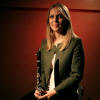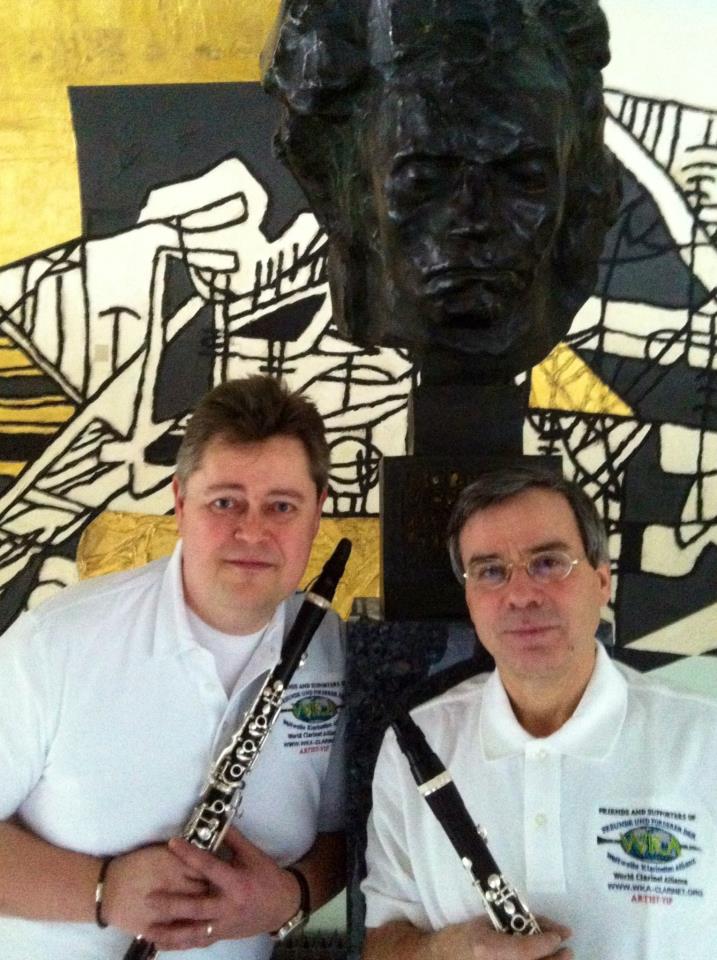
Click over Logo to Home Page
Click
here to WKA Website Directory
Welcome to the Industry News Page
This feature on the WKA
site provides new offerings and important product and service news for the
Clarinet
Community. All firms
with new products are encouraged to submit information so the Clarinet world can
be made
aware of innovations and
developments that can enhance their performance and educational goals and
interests.
Please send
articles to
Mike Getzin, WKA
CEO
Music Industry News 2013
28 December 2013
New
Applied Microphone Technology AMT
WS Double Microphone for the Clarinet
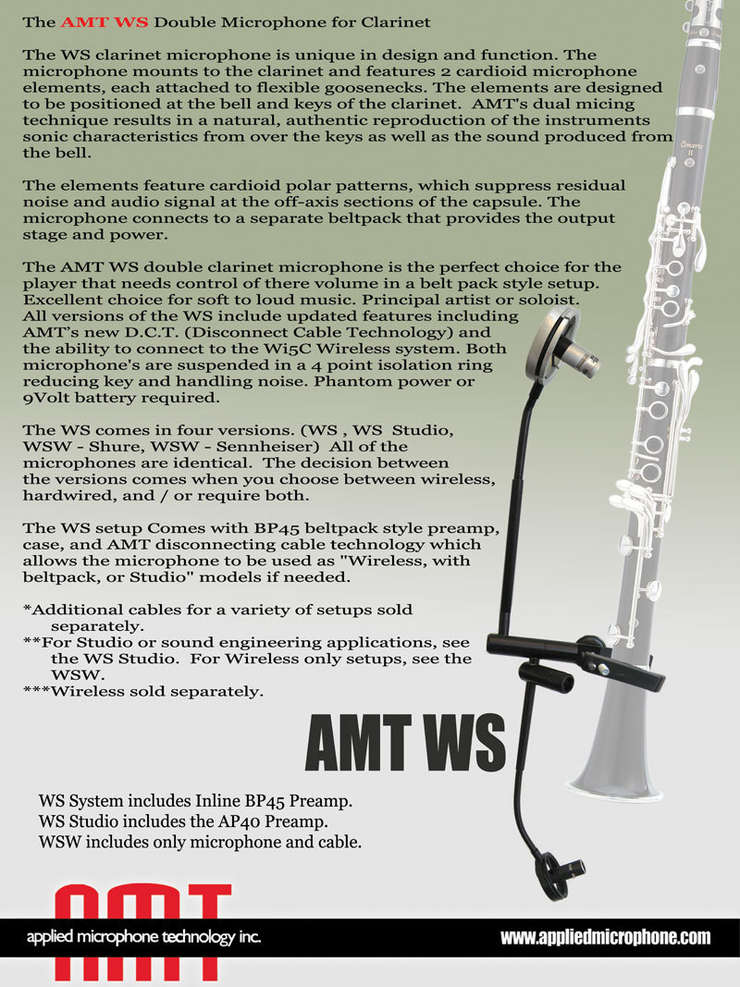
6 December 2013
Tokyo, Japan
New Professional Clarinets
designed by VIP Kazuo Fujii, just issued in Japan by
Yamaha and later to be presented to USA in Spring 2014
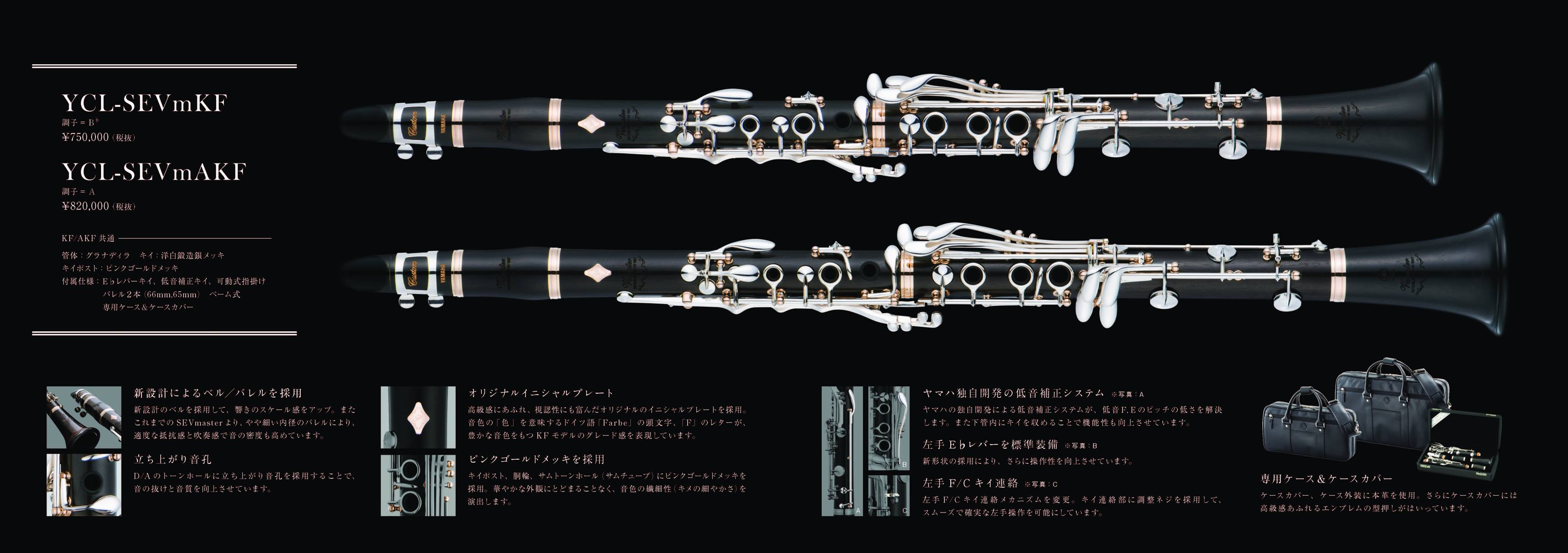
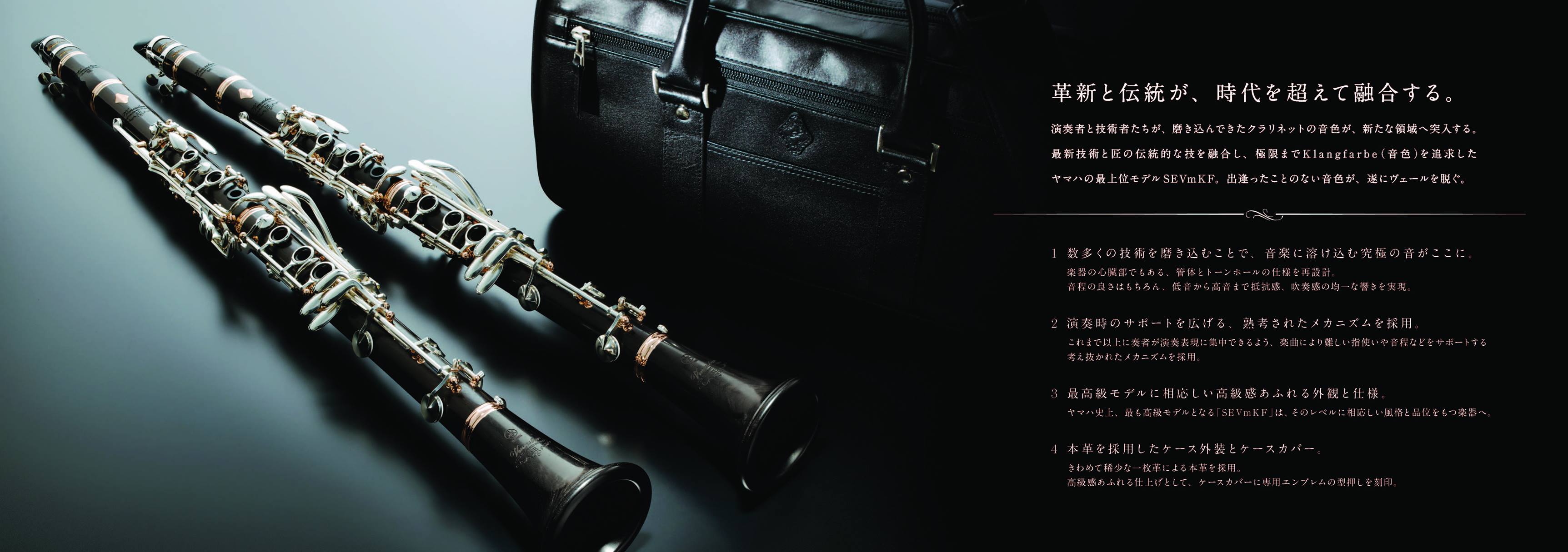
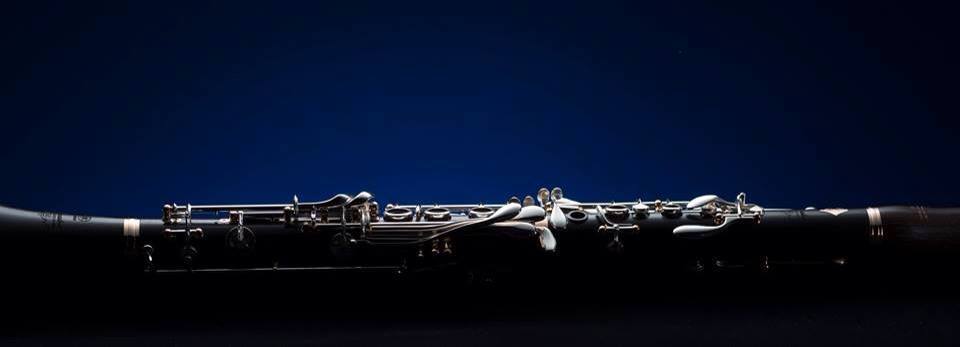
6 December 2013
Paris, France
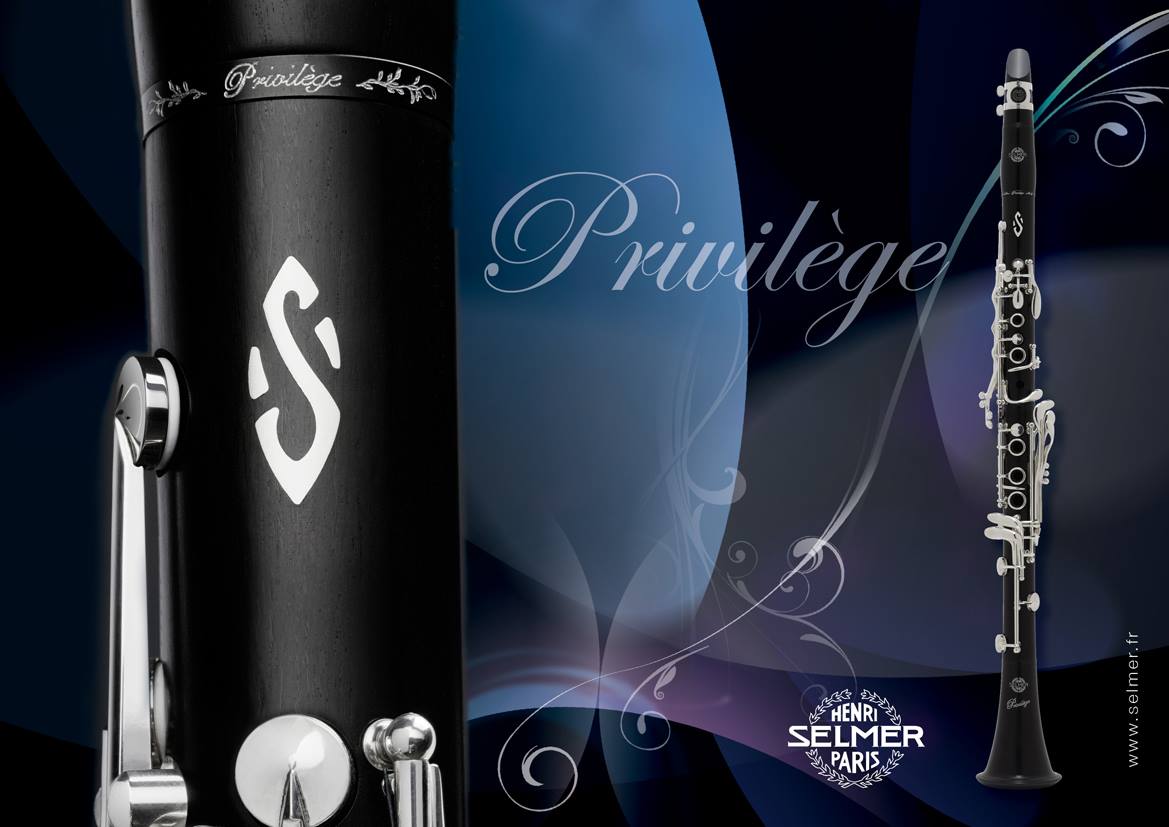
10 September 2013

Paris, France
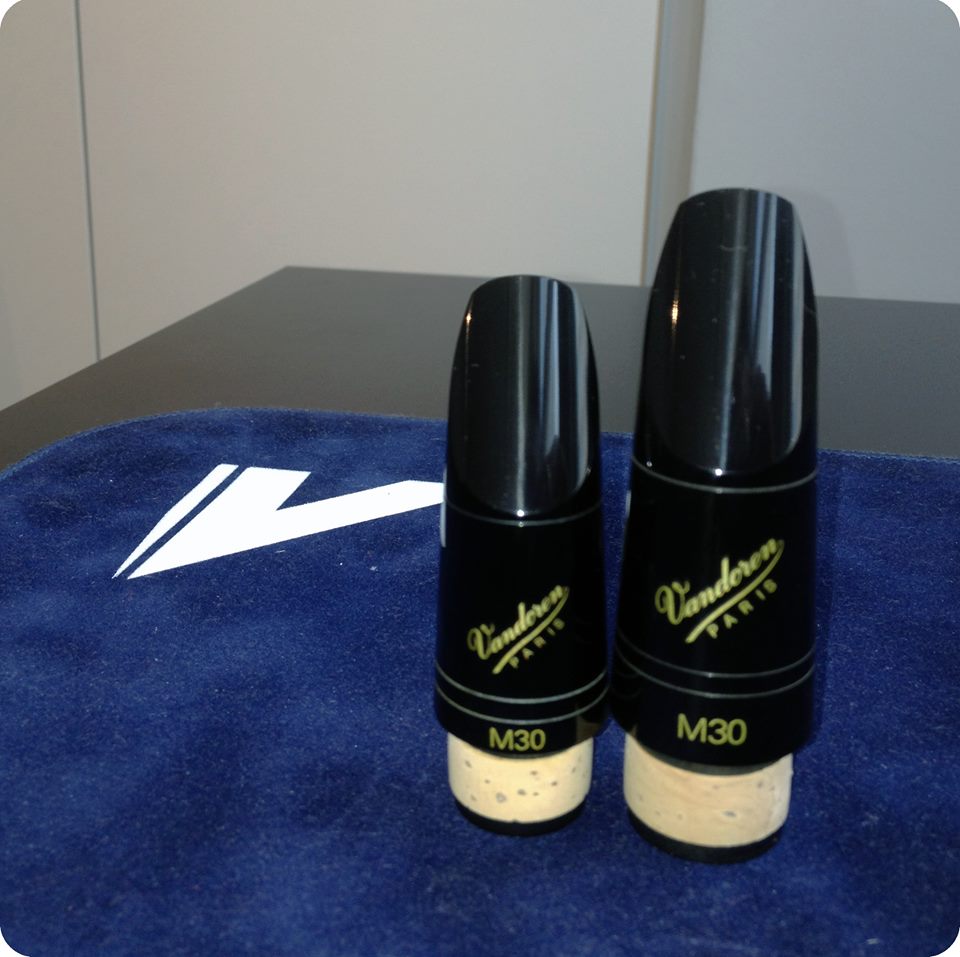
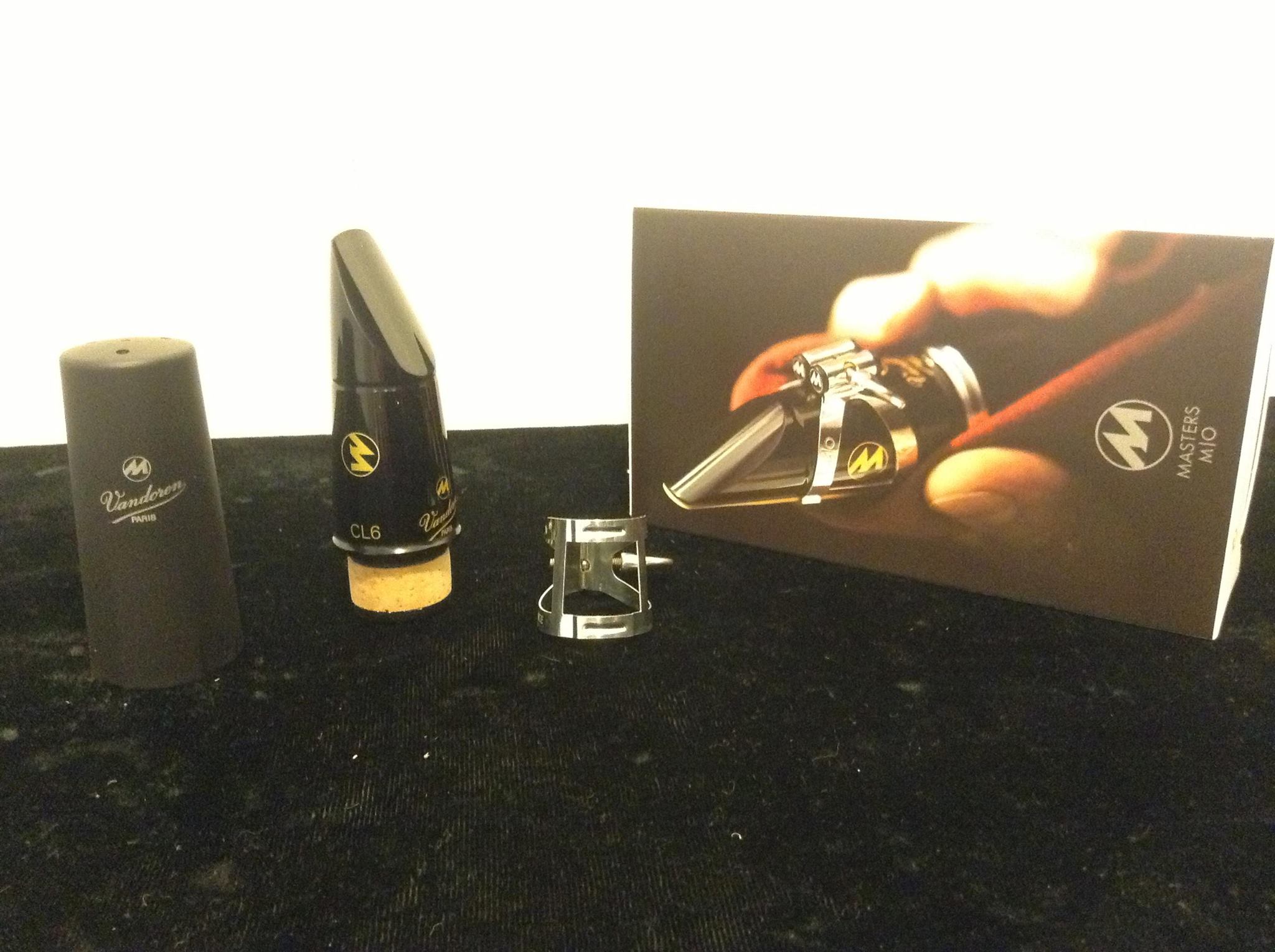
Two recent Pro
mouthpiece premieres - M30 for Eb Clarinet next to the Bb model, and
right, the Master CL6 Pro mouthpiece, with tip opening more open from the CL4 and CL5
models
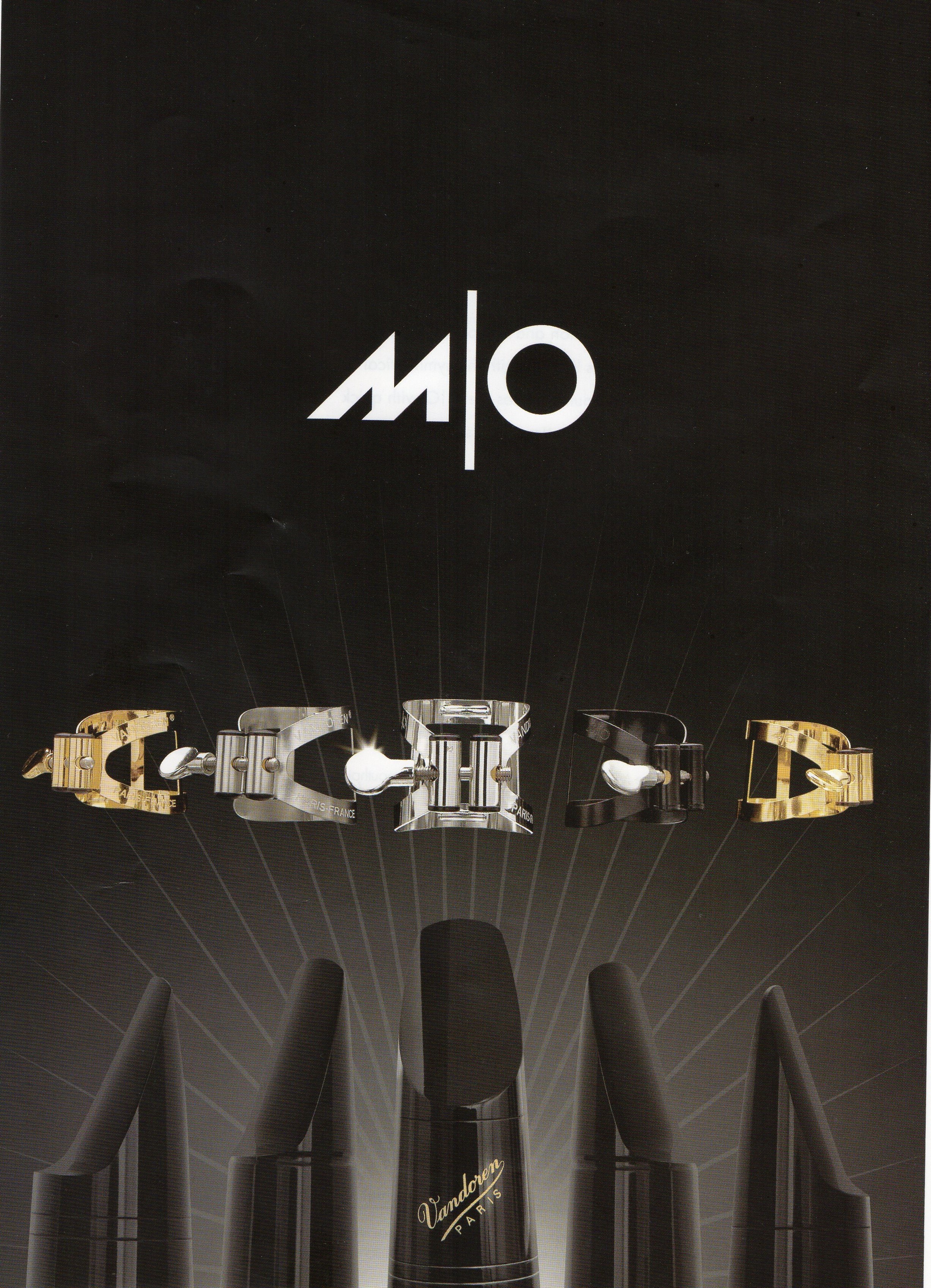
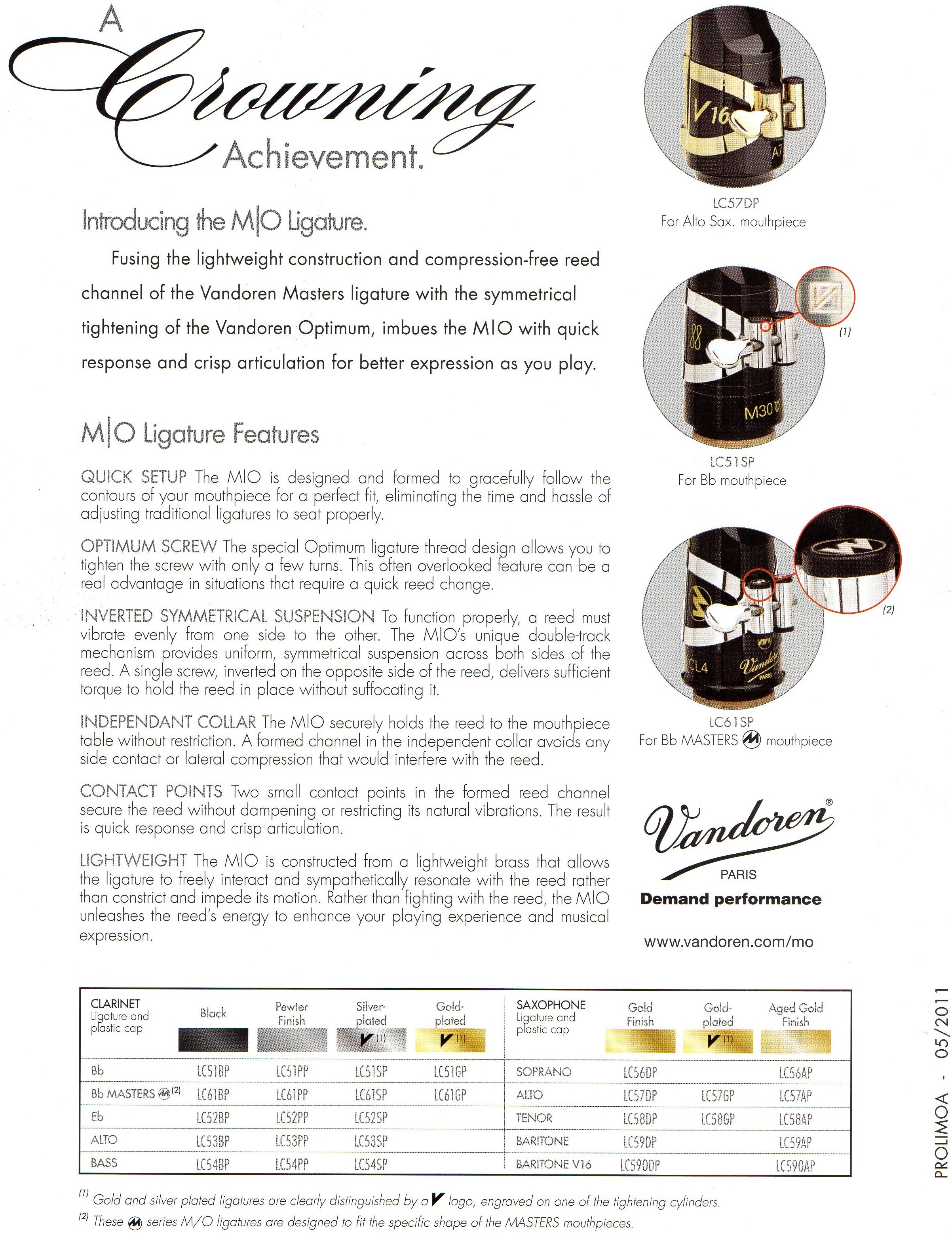
10 September 2013
Tokyo, Japan


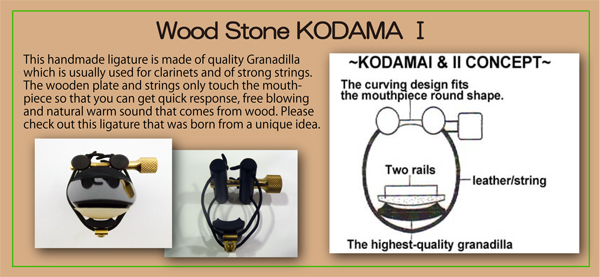
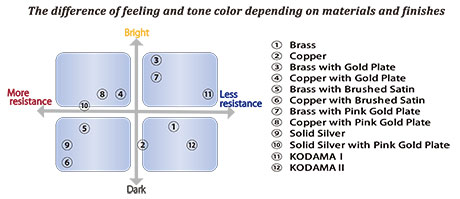
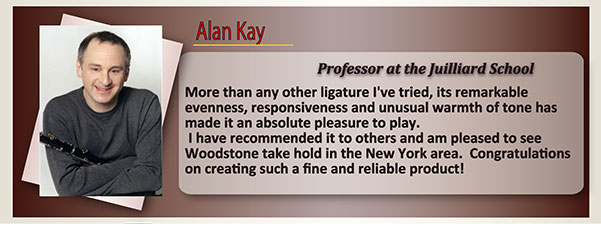

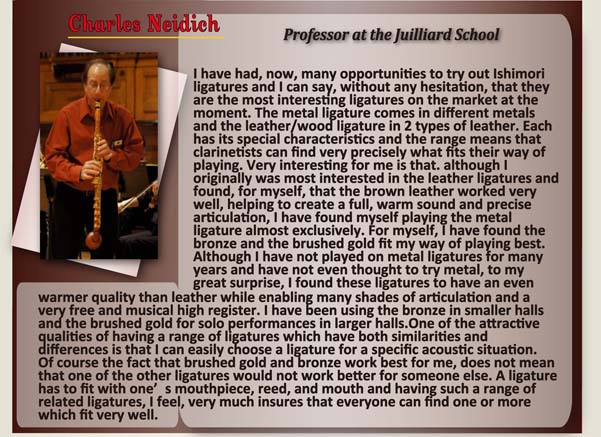
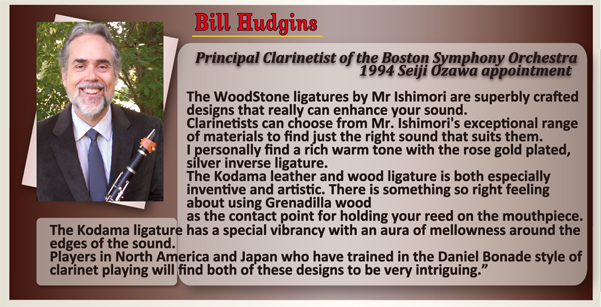
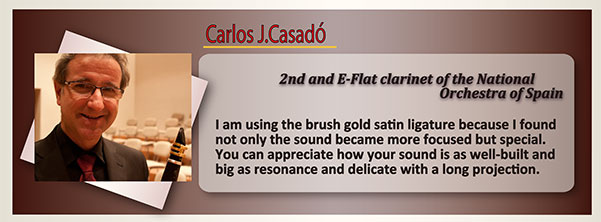

25 August 2013
Silverstein Ligatures
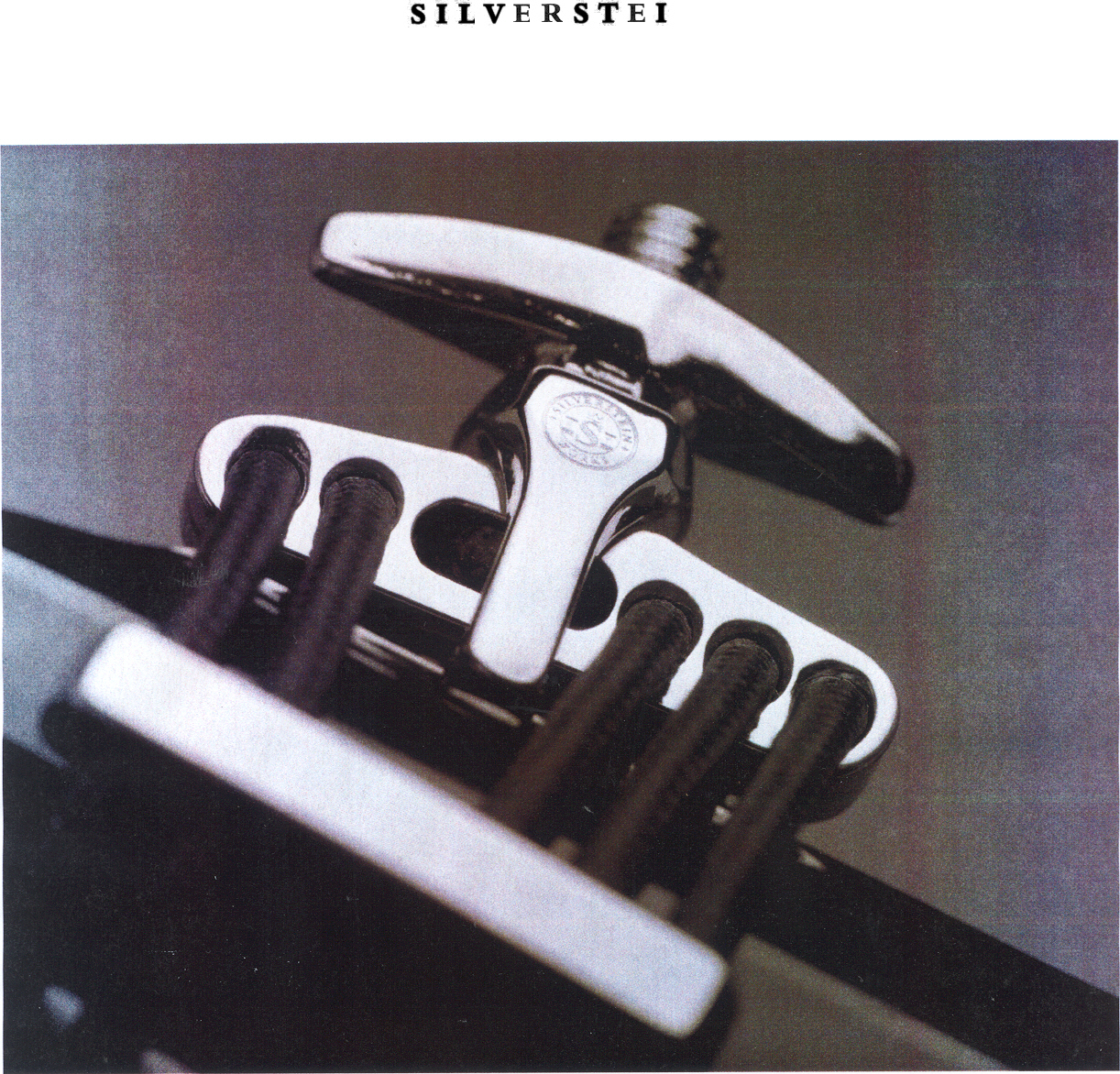
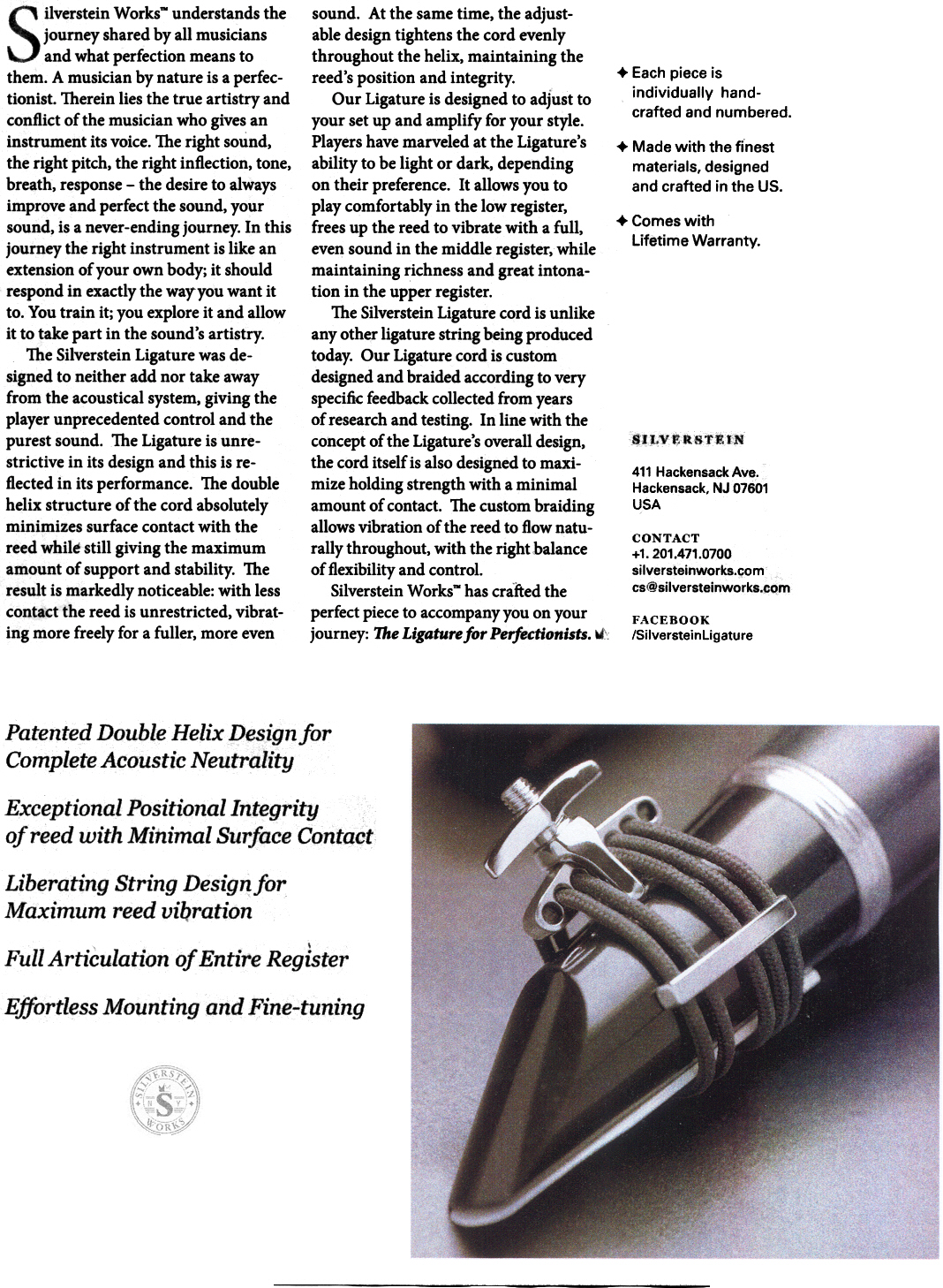
As seen at ClarinetFest Assisi 2013

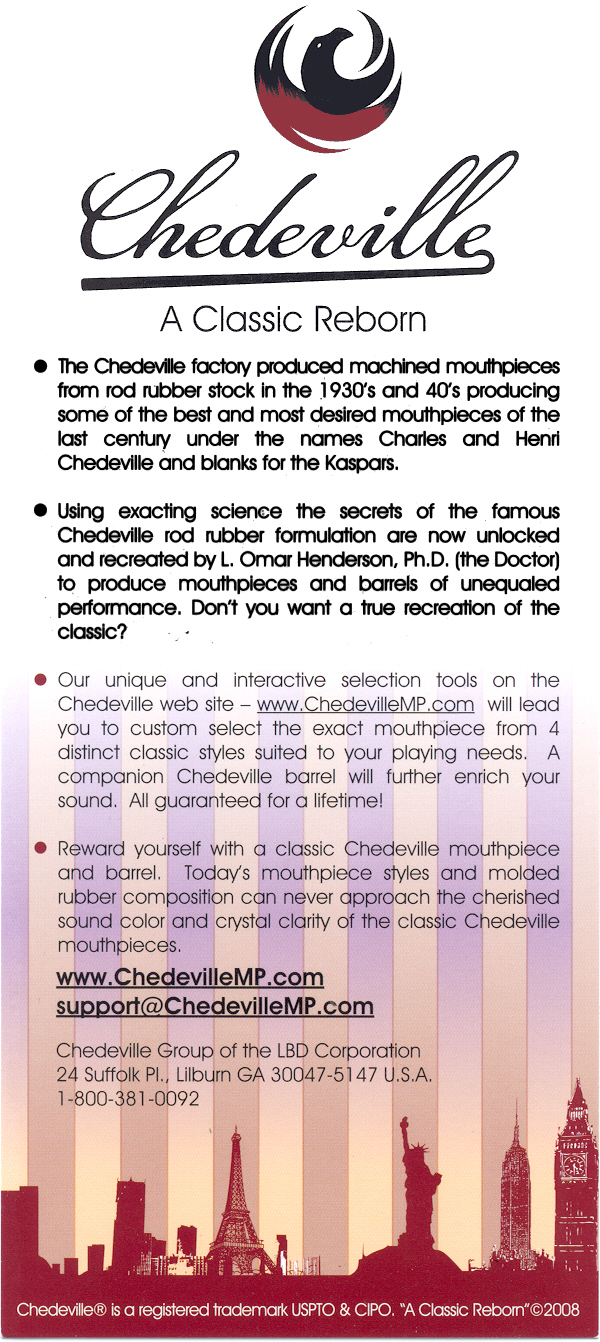
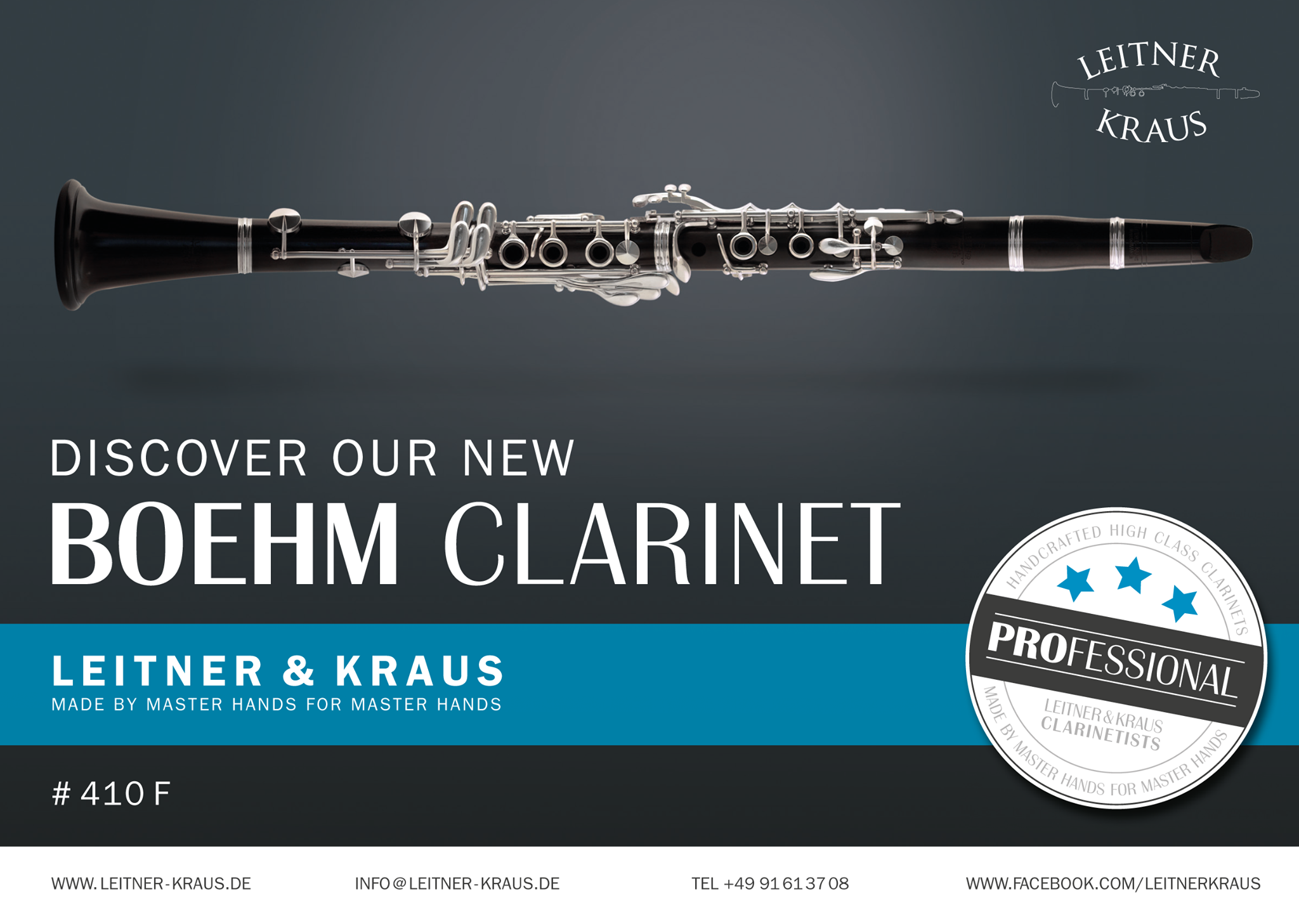
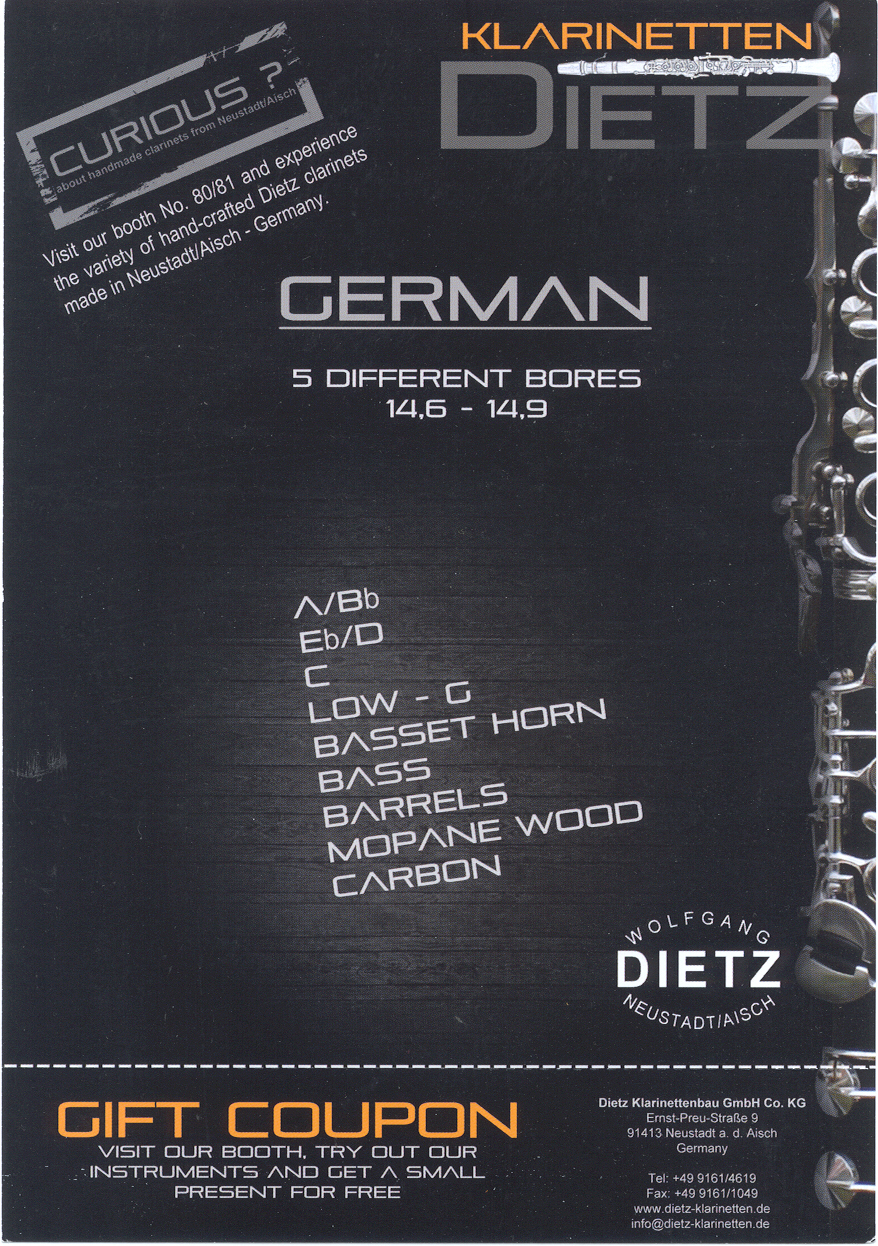
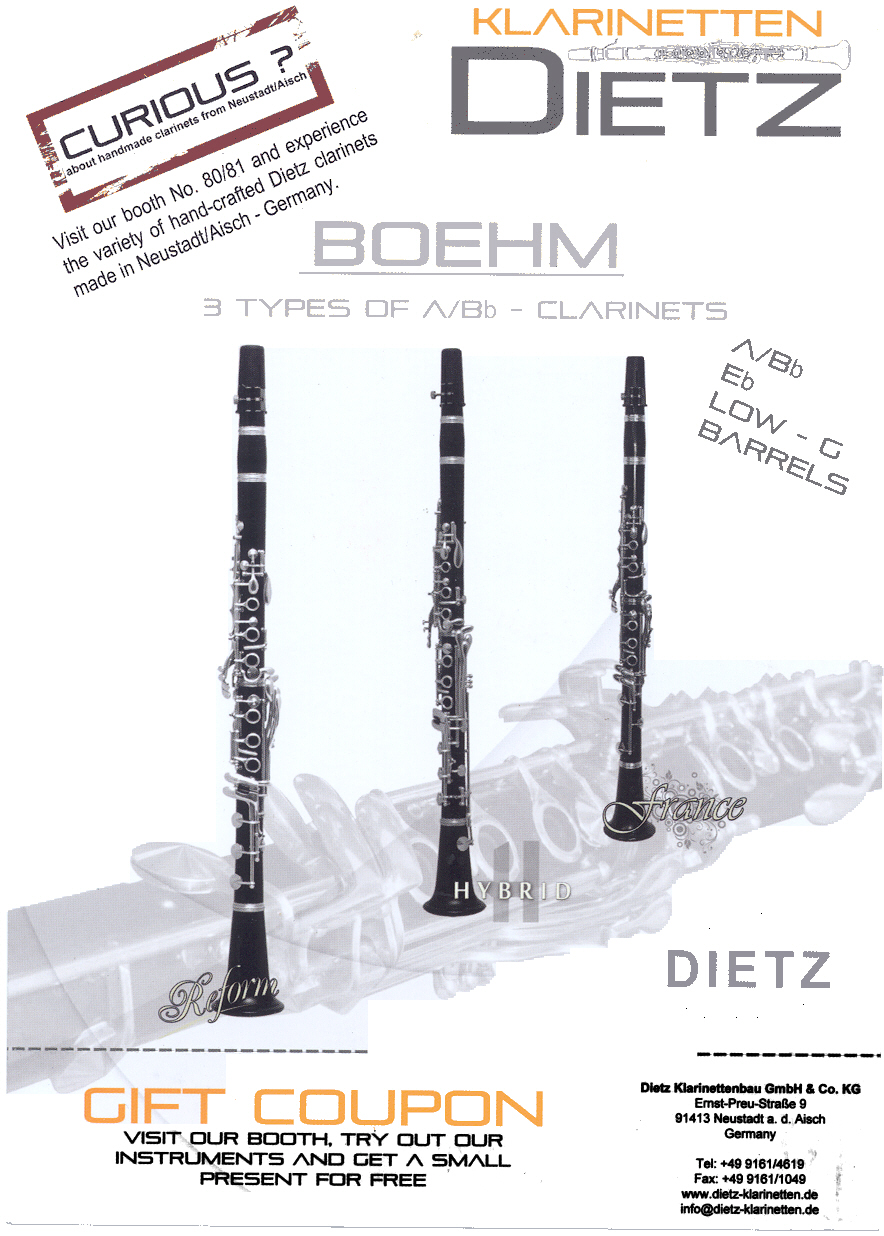
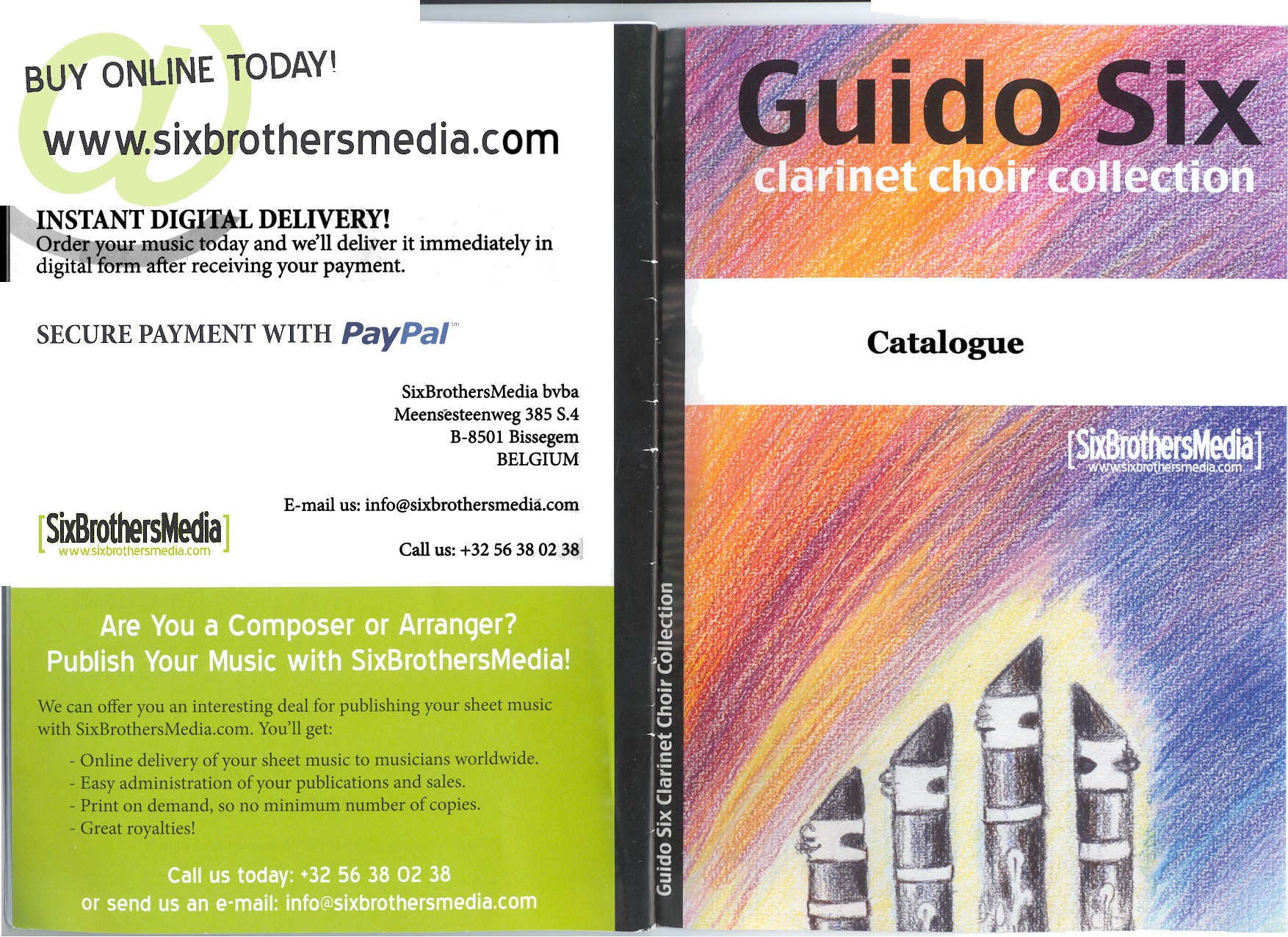
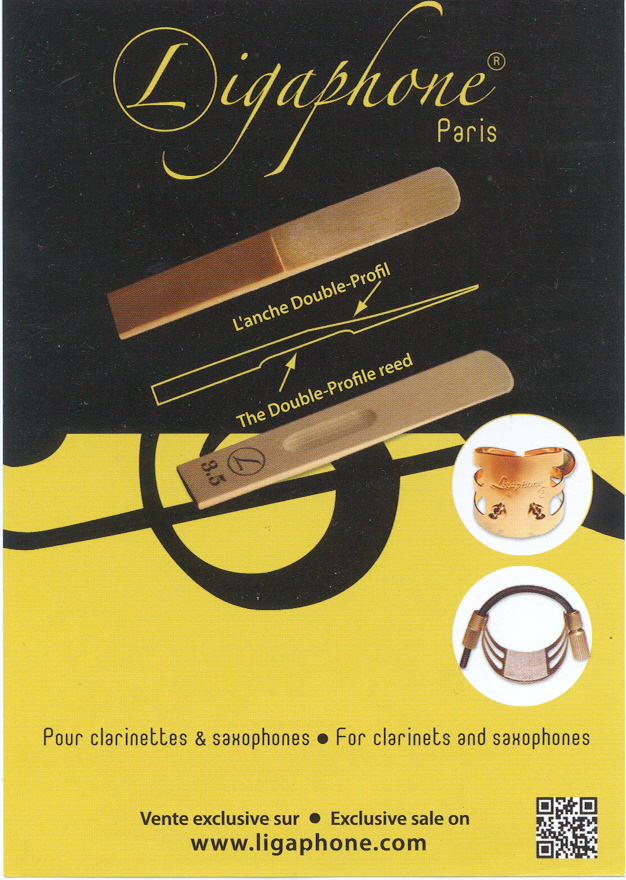
Below are World-Class Tuning barrels, with more entries to come, serving both
Clarinets in French and German systems. Cutting edge concepts in design
including pitch control and bore technology are offered here. This opens
up flexibility in use to serve various tonal applications, whether playing solo,
chamber music, Orchestral, or Band and wind performance.
From Japan:
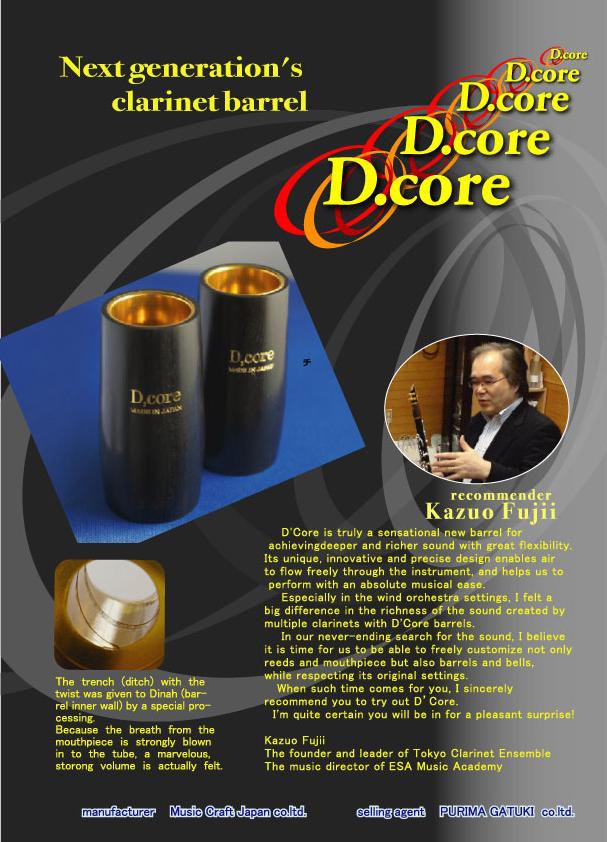
From Germany
Henri Paulus and Mattias Schuler, inventors, and Klarinettists in the Bonn
Beethoven Orchester
This recent barrel innovation which has caught popularity in Germany is
available for both German and French Boehm system instruments. Unique is the
tuning itself is controlled by turning the center ring on the barrel to shorten
or lengthen it to proper pitch as conditions change in performance.
Information on ordering is available on the above website. Of vital
interest many of the great iconic Clarinetists in Europe are actively using and
endorsing these barrels, and word is spreading fast quickly
to the USA. Artists galleried above include Wenzel Fuchs (Berliner Philharmoniker), Sabine Meyer Professor at Lubeck Hochscule fur Musik, Solo
Clarinet in the Lucerne Festival Orchestra and founder of the Trio de Clarone),
and Pascual Martinez-Forteza (New York Philharmonic), Franklin Cohen (Solo
Clarinetist in The Cleveland Orchestra), Chad Burrow (Professor at the
University of Michigan), Sabine Grofmeier (German Soloist and Master Class
Teacher), Wenzel Fuchs and Mike Getzin, and Mike Getzin performing with The
United States Army Band with Alumnus, Legend Solo Klarinettist of the
Berliner Philharmoniker Karl Leister, and Ecesu Sertesen (Soloist and Solo
Clarinetist in the Istabul Opera/Ballet Orchestra).
The clarinet
z(oom)-barrel
When the
conventional barrel is pulled out for
assimilation of intonation the
vibrations are cushioned on transfer
from the mouth piece to the clarinet
since the only remaining connection is
the tenon cork. A cavity is formed on
the inside and a gap on the outside.
As a
consequence it was our aim to develop a
clarinet barrel leading to new sound
dimensions and at the same time
eliminating the above mentioned
problems.
The new
development protected by trade mark
rights offers an unprecedented sound
brilliance. Our zoom barrel represents
the perfect symbiosis of improved sound
characteristics and reproducible
intoning. The fact that the new z-barrel
disposes of continuous boring in every
position of length and additonally is
not interrupted on the outside leads to
an improvement which seemed to be
unimaginable so far. Tuning becomes
precisely adjustable and visible by an
adjusting collar supplied with a scale.
Rotating the adjusting collar lets the
barrel expand without modifying the
axial alignment.
Our clarinet
barrel is produced with modern CNC
turning technology and extended by the
adjusting collar for assimilation of
intonation without the mouth piece or
the clarinet turning to each other.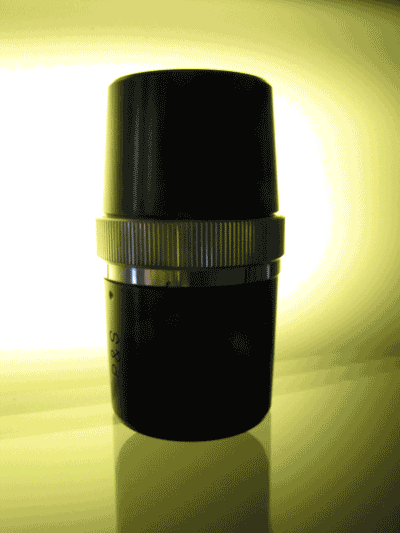
The barrel
was engineered for clarinetists in
soloistic, symphonic and chamber musical
areas as well as brass orchestras |
From France
2 May 2013
Paris, France
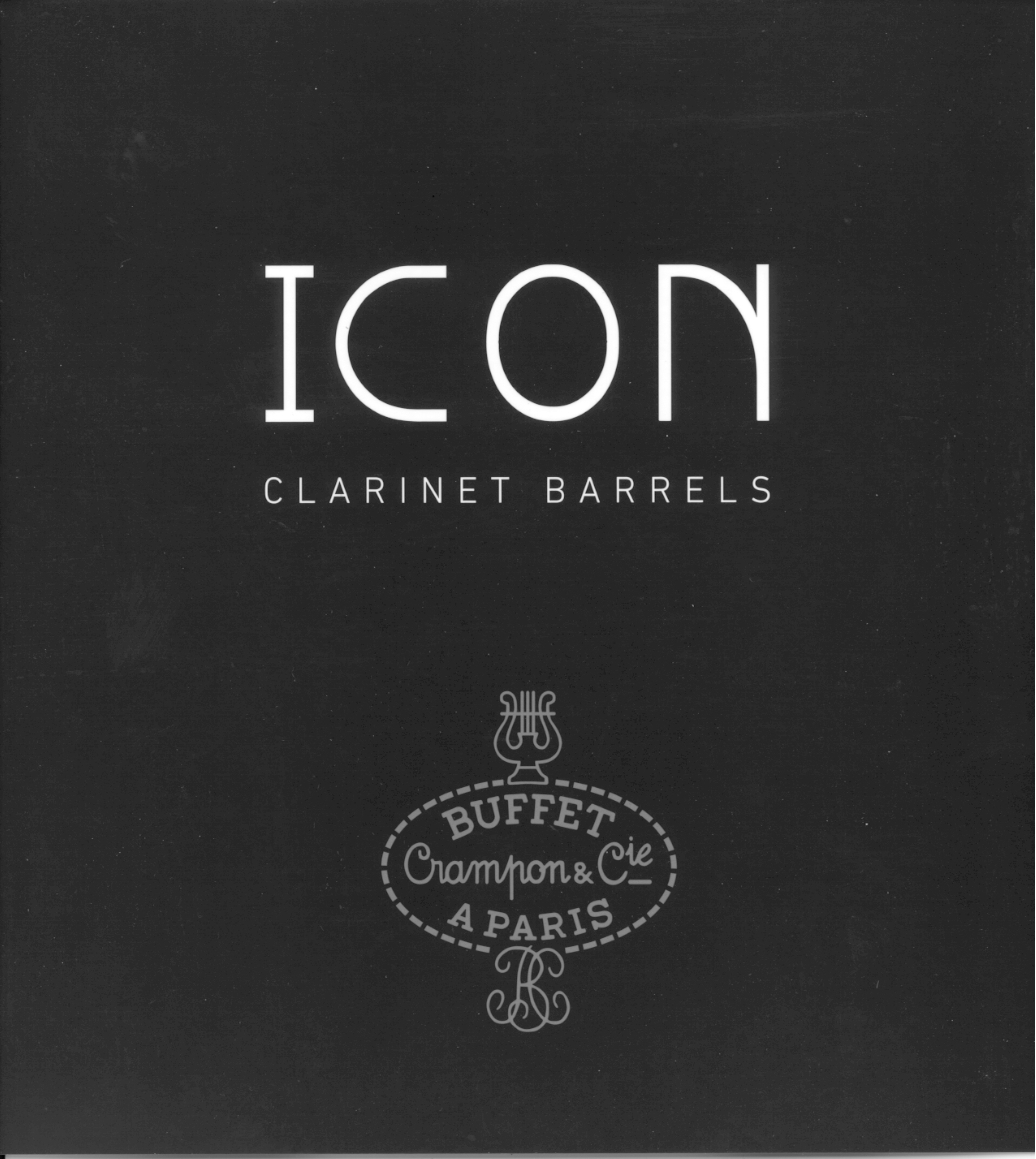
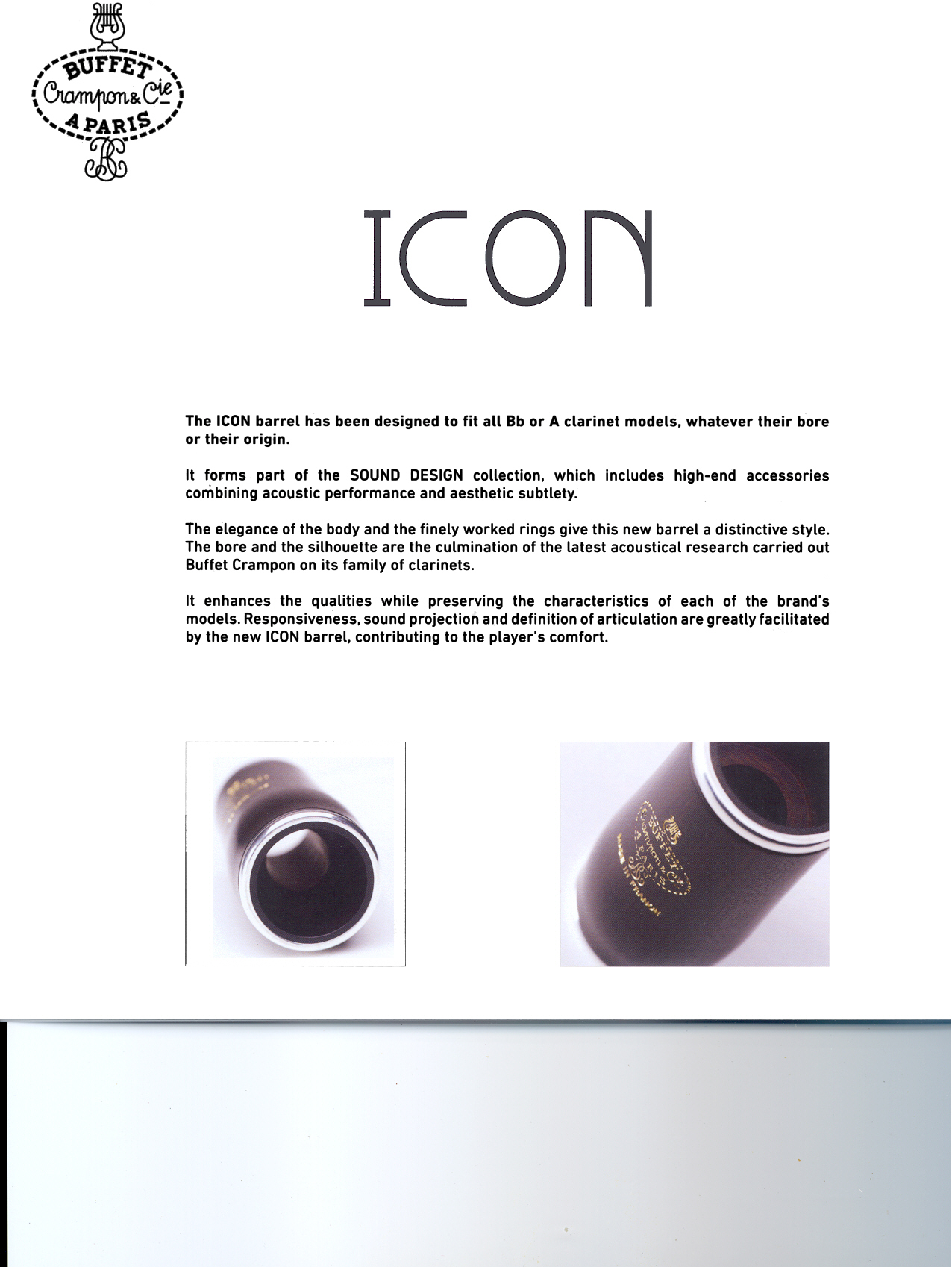
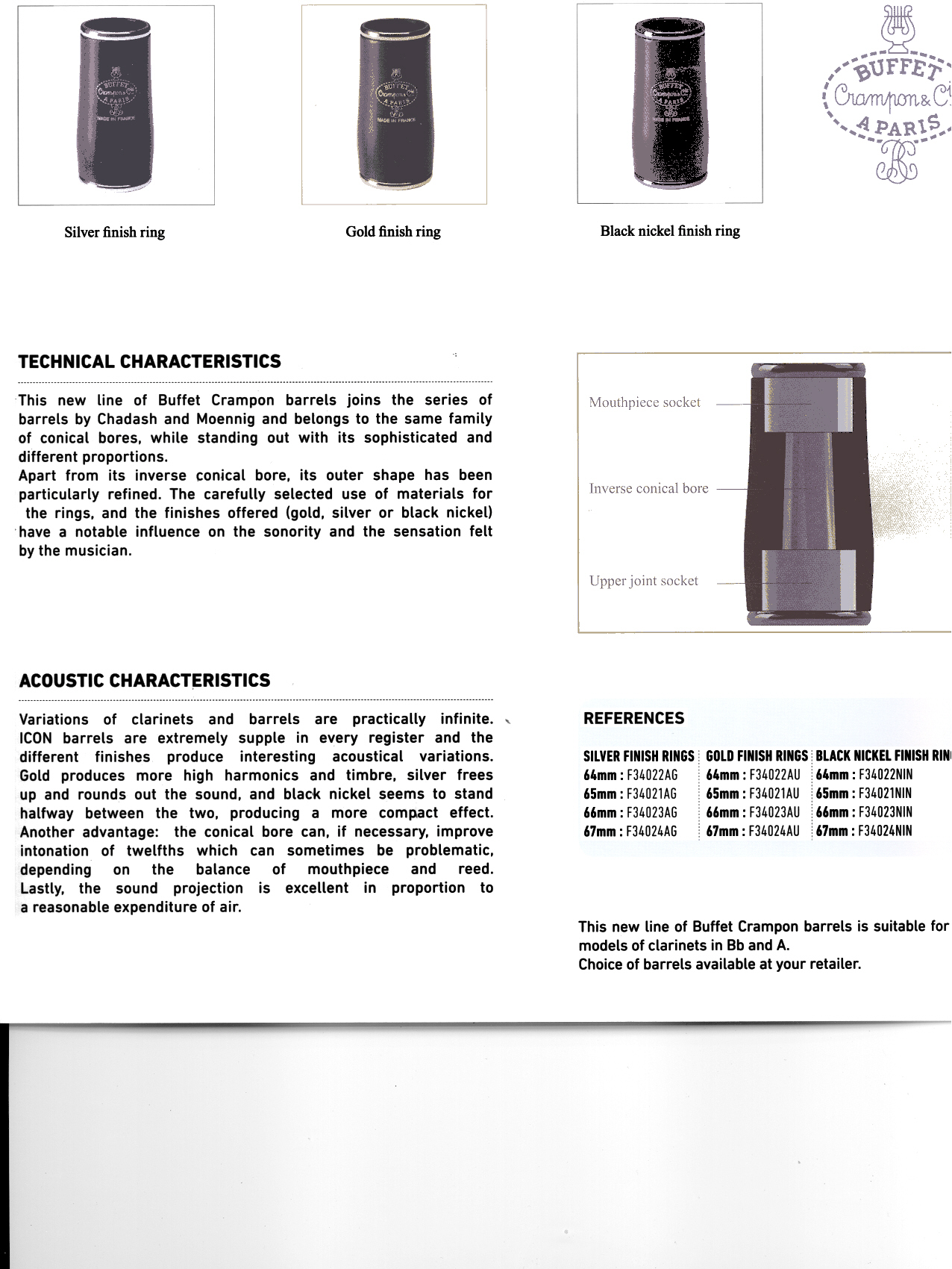
29 April 2013
Hof Praebach, Austria
New Mouthpiece
innovation from Austria - For French System Clarinetists the Nick
Playeasy B2 is highly recommended.
Recommended by VIP Wenzel
Fuchs, Solo Klarinetist in the
Berliner
Philharmoniker
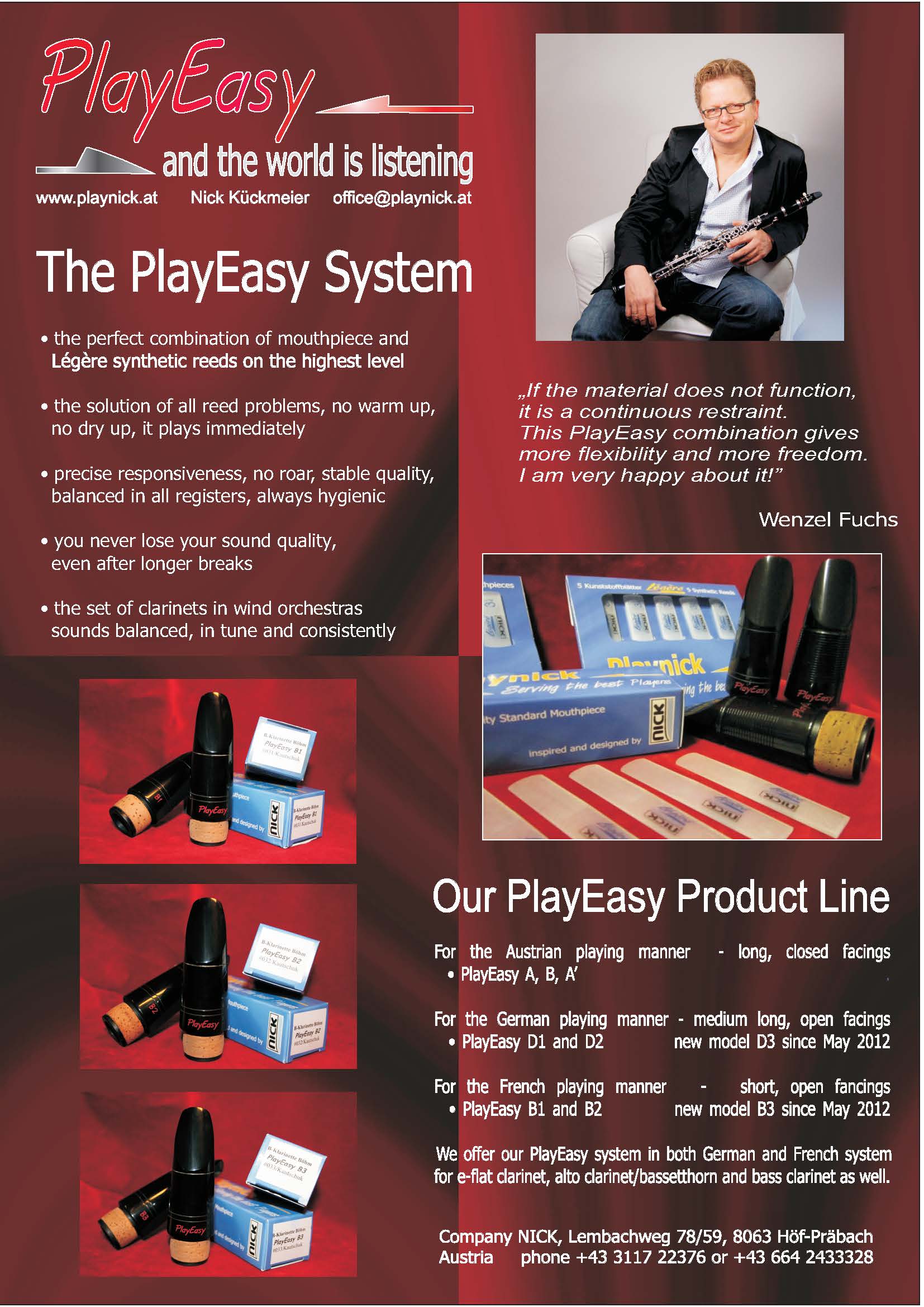
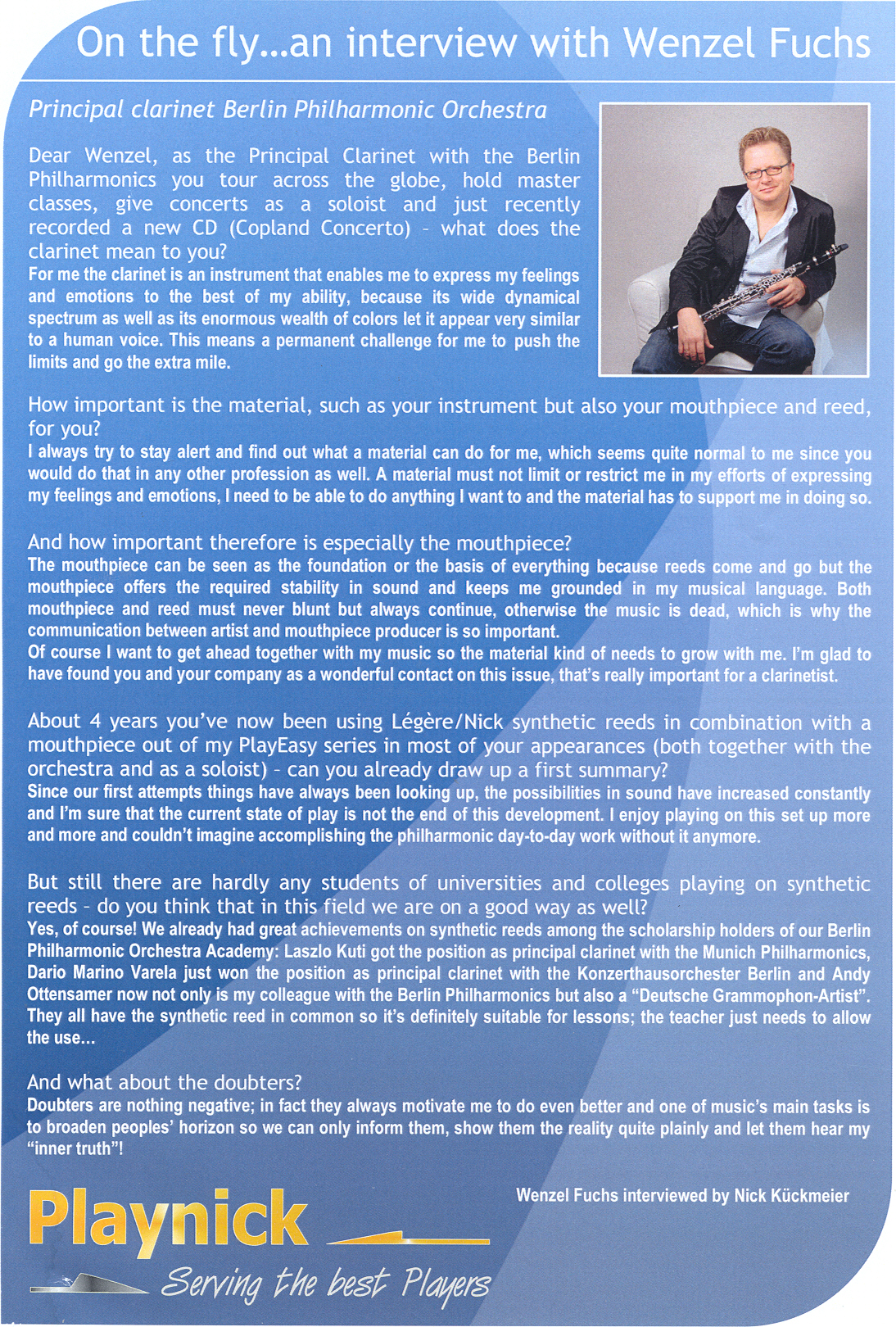
2 April 2013
Osakasayamashi, Osaka,
Japan

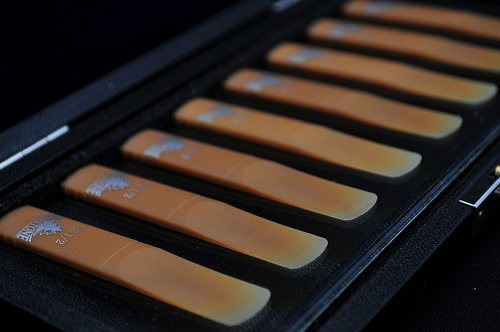
About our reeds
Material
The Forestone material is a mixture of polypropylene resin and cellulose wood
fibre. More than 50 percent of the wood fiber used is bamboo. The material is
brownish in colour, tasteless, odourless and non-toxic. The exceptional sound,
resilience and flexibility of Forestone reeds is due mainly to this special
material.
FABRICATION
Forestone reeds are made by proprietary injection molding developed in Japan.
This results in reeds with optimally smooth vamps that are exceptional uniform
and consistent, reed to reed.
CONSTRUCTION & PROFILE
Forestone reeds are perfectly balanced side to side and front to back. The more
or less standard profile tapers down to 0.1 mm thickness across the tip. Held up
to the light, the reeds display the classic upside-down “U-shape” associated
with cane reeds.
PERFORMANCE
Forestone reeds tend to maintain their strength / resistance over time. They
vibrate well and hold the centre of the sound in a manner similar to that of a
good quality cane reed. The basic timbre is robust, clear and strong, with just
enough “buzz” to ensure projection and carrying power. Intonation is stable and
the reeds articulate well throughout the range of the clarinet and saxophone.
FEEL
The difference in feel between Forestone and cane is minimal. That said, it is
the wise player who takes some time to get comfortable with Forestone, in the
same way as he or she would take time to get comfortable with a new mouthpiece,
ligature, barrel or instrument.
ADJUSTMENT
Blowing resistance can be adjusted with Forestone reeds by slightly raising or
lowering the reed on the mouthpiece table (slightly lower placement = slightly
less resistance, slightly higher placement = slightly more resistance). Although
other types of adjustment are usually not necessary, the material is sufficient
hard that one can still do so using blades, files, sandpaper, reed rush or
whatever other tool or implement is desired. One can also clip Forestone reeds
successfully.
LONGEVITY
The useful life of a Forestone reed will vary from player to player given that
everyone’s way of playing — his or her embouchure address — stresses the reed
differently. Forestone reeds will far outlast good quality cane as the
proprietary composite material is impervious to water-logging and breakdown by
saliva, and will not warp due to changes in humidity or altitude. After a
certain number of hours, however, the reeds will begin to feel less lively and
responsive. The loss in vitality, be it subtle or more pronounced, would signal
the time has come to retire the reed in favor of a newer one.
22 January 2013
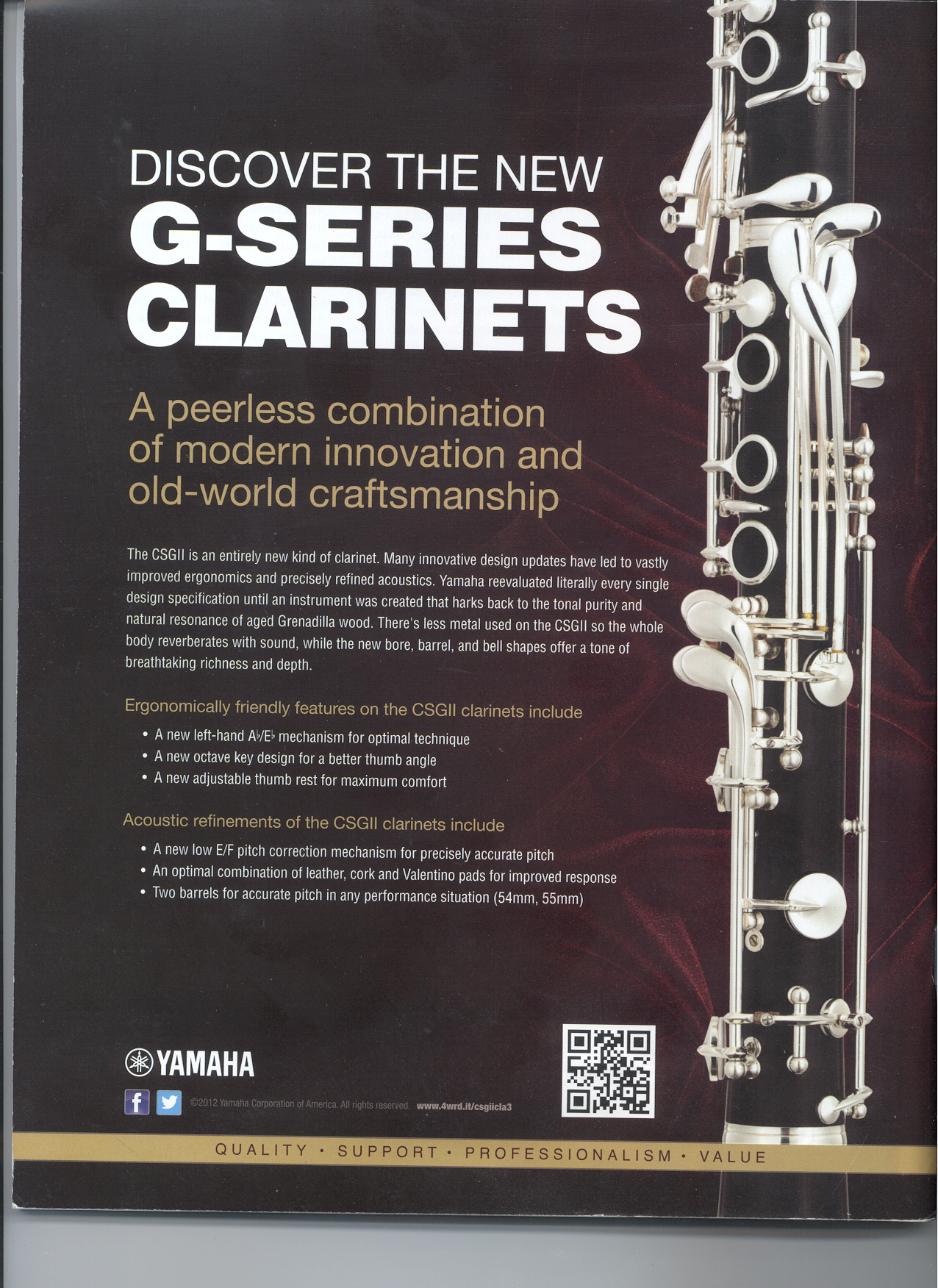
7 January 2013
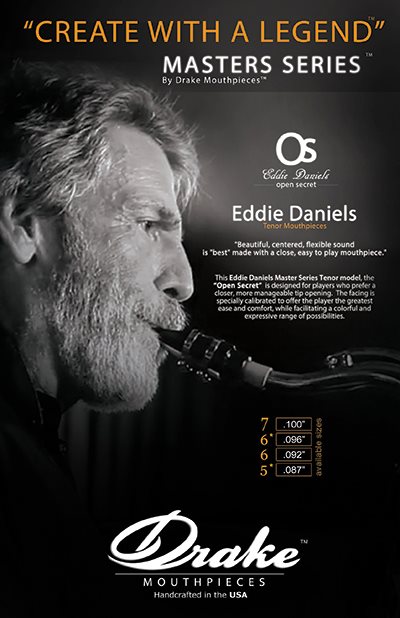
Copyright © 1999 WKA-Clarinet.org. All rights reserved.
Revised: December 28, 2013





































